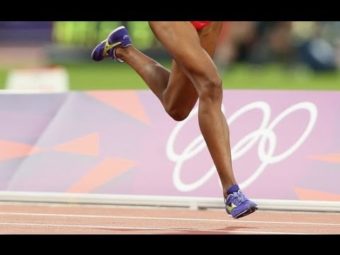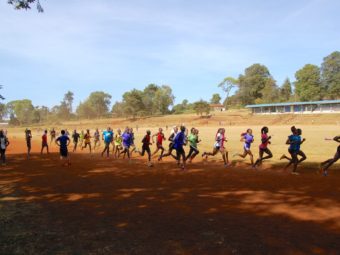If you have been a runner for a little while I'll bet, you have noticed aches and pains either while you are running or after a run. But what do you do with this information could make a huge difference in you being able to continue running in the big picture down the road. Runners are a stubborn breed of folks who would rather ignore a small ache than address what is causing the root of the problem. Instead the mentality is to run through the pain and when they get home they will take some medicine or electricity to make it go away. After doing this a few times too many, the body is going to go on strike and call you on your debt from all the abuse it endured. Others might even blame their shoes for the sideline injury. Some will still try to run using special tape and medicine to get them through. What is wrong with this rationale is it is not addressing the elephant in the room. We all run differently because we are built differently but there are some rules that can keep you out of harm's way. First, do you pay attention to how you run? Do you know what part of your foot touches the ground first? Do you bend at the waist? Do you push off with your toes? Just these few things can cause you some down time if not properly addressed.
Any other type of athlete takes lessons or have coaches to learn how to move and play but for most runners they go it alone. Ask yourself have you ever seen yourself run? How can you tell what is happening when your only perspective is while you run? If your feet are turning over at cadence of 170-180 stride per minute, can you really tell what's happening if you have never listened to your body before? Taking the time to have a running analysis will give a lot of useful information that can help you avoid not toeing the line. Do you ever look at your running shoes soles? They can also help you gather information about your running form. But what do you do with the information is key to changing hurtful habit patterns.
We as runners would rather spend money on shoes and gizmos than spend a day at a workshop. Workshop's that actually could get to root of our problems and provide us with a lifetime solution to allow us to run off into the sunset of our life. ChiRunning has been around since the late 90s and has helped over half million runners correct bad running habits. At most workshops, running analysis’s are provided before and after, and the changes can be astounding. What is sad is that the majority of us came after we had the injuries, looking for the pain-free instead of coming for an efficient way to run. But the good thing was that by learning to be efficient we learned to listen to our body and make adjustments to feel if the change was effective. The listening to the body is like learning a new language and may take a while for some to learn it. But the payoff in the end is a lifetime of running without the drama of injuries.
Does it feel like some runs seem to take a lot of energy and wear you out? What about the day after your last race; were you sore and had to take some downtime? Learning ChiRunning will change all of that. Remember this style of running was developed by an ultra-marathon runner. Why waste energy when you can be efficient and still be fast as you are now or even faster if you learn to relax. You do not have to wait for an injury to happen to enjoy running without effort. Attending a workshop is just the first step in the right direction, learning to feel what's going on and then learning what adjustments are right for you are a lifetime practice.
Oh yeah, you can still buy all the running gizmos and shoes but learn to listen to what your body is asking your mind to do and then make the adjustment and listen.




